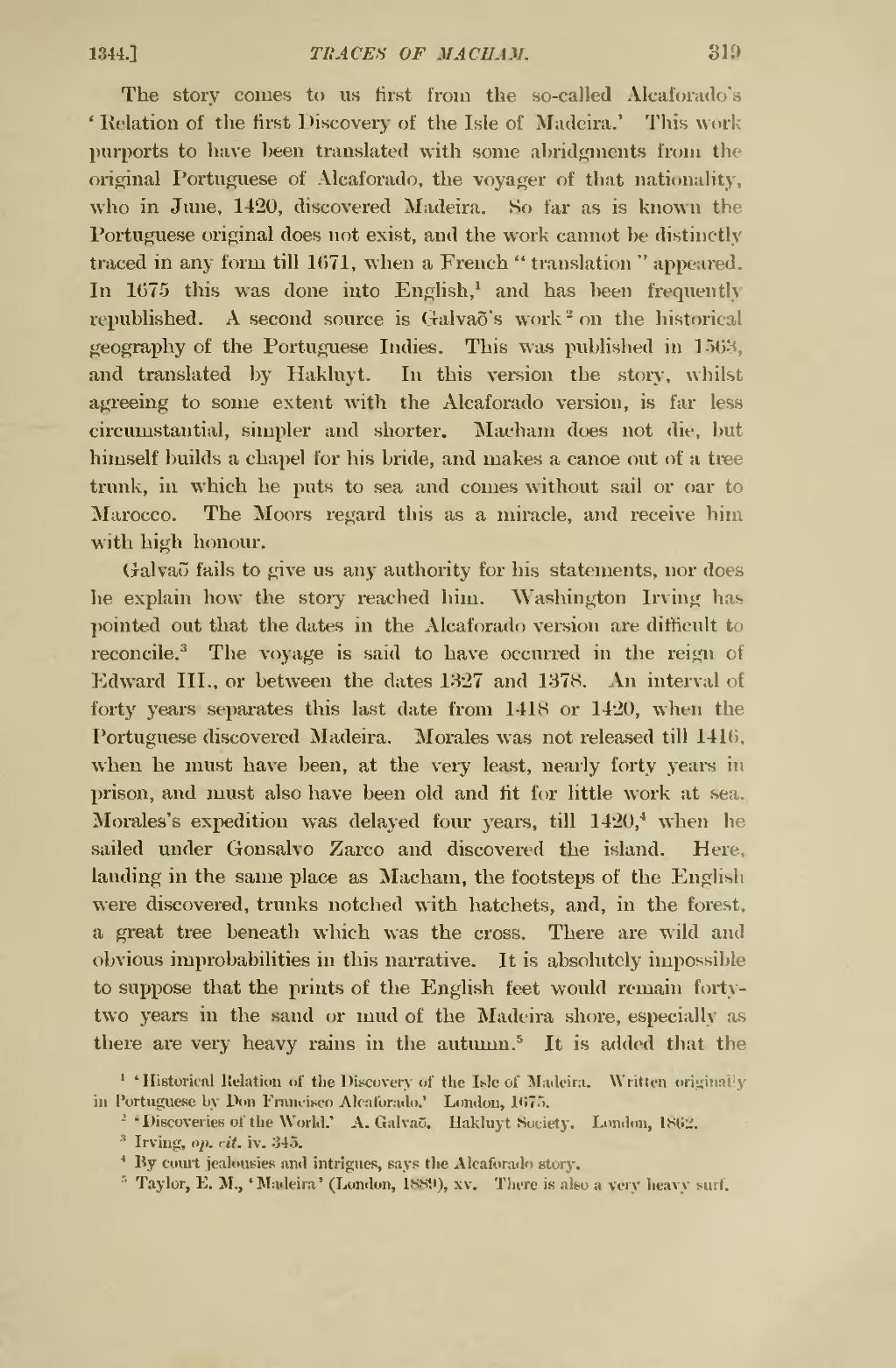The story comes to us first from the so-called Alcaforado's 'Relation of the first Discovery of the Isle of Madeira.' This work purports to have been translated with some abridgments from the original Portuguese of Alcaforado, the voyager of that nationality, who in June, 1420, discovered Madeira. So far as is known the Portuguese original does not exist, and the work cannot be distinctly traced in any form till 1671, when a French "translation" appeared. In 1675 this was done into English,[1] and has been frequently republished. A second source is Galvaõ's work[2] on the historical geography of the Portuguese Indies. This was published in 1563, and translated by Hakluyt. In this version the story, whilst agreeing to some extent with the Alcaforado version, is far less circumstantial, simpler and shorter. Macham does not die, but himself builds a chapel for his bride, and makes a canoe out of a tree trunk, in which he puts to sea and comes without sail or oar to Marocco. The Moors regard this as a miracle, and receive him with high honour.
Galvaõ fails to give us any authority for his statements, nor does he explain how the story reached him. Washington Irving has pointed out that the dates in the Alcaforado version are difficult to reconcile.[3] The voyage is said to have occurred in the reign of Edward III.., or between the dates 1327 and 1378. An interval of forty years separates this last date from 1418 or 1420, when the Portuguese discovered Madeira. Morales was not released till 1416. when he must have been, at the very least, nearly forty years in prison, and must also have been old and fit for little work at sea. Morales's expedition was delayed four years, till 1420,[4] when he sailed under Gonsalvo Zarco and discovered the island. Here, landing in the same place as Macham, the footsteps of the English were discovered, trunks notched with hatchets, and, in the forest, a great tree beneath which was the cross. There are wild and obvious improbabilities in this narrative. It is absolutely impossible to suppose that the prints of the English feet would remain forty-two years in the sand or mud of the Madeira shore, especially as there are very heavy rains in the autumn.[5] It is added that the
- ↑ 'Historical Relation of the Discovery of the Isle of Madeira. Written originally in Portuguese by Don Francisco Alcaforado.' London, 1675.
- ↑ 'Discoveries of the World.' A. Galvaõ, Hakluyt Society. London, 1862.
- ↑ Irving, op. cit. iv. 345.
- ↑ By court jealousies and intrigues, says the Alcaforado story.
- ↑ Taylor, E. M., 'Madeira' (London, 1889), xv. There is also a very heavy surf.

